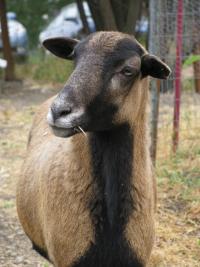Search Results (Searched for: )
- Benb

06 Jul 2025 18:34 - 06 Jul 2025 18:37
Replied by Benb on topic Adding external switch for emergency stop and feed override
Adding external switch for emergency stop and feed override
Category: Basic Configuration
- endian

06 Jul 2025 17:52 - 06 Jul 2025 17:54
Replied by endian on topic PID tuning when you have a tuned Servo in CSP mode?
PID tuning when you have a tuned Servo in CSP mode?
Category: EtherCAT
- kworm
- kworm
06 Jul 2025 17:40
Replied by kworm on topic PID tuning when you have a tuned Servo in CSP mode?
PID tuning when you have a tuned Servo in CSP mode?
Category: EtherCAT
- cmorley
- cmorley
06 Jul 2025 17:35
- endian

06 Jul 2025 17:35
Replied by endian on topic PID tuning when you have a tuned Servo in CSP mode?
PID tuning when you have a tuned Servo in CSP mode?
Category: EtherCAT
- cakeslob
- cakeslob
06 Jul 2025 17:26
- cakeslob
- cakeslob
06 Jul 2025 17:02
Replied by cakeslob on topic Flying Probe ATG A5 Not Connecting Message
Flying Probe ATG A5 Not Connecting Message
Category: General LinuxCNC Questions
- rhscdn
- rhscdn
06 Jul 2025 16:39
Recommended card: AXYZ CNC router upgrade was created by rhscdn
Recommended card: AXYZ CNC router upgrade
Category: Driver Boards
- SjCNC
- SjCNC
06 Jul 2025 16:26
Please help with adding laser control was created by SjCNC
Please help with adding laser control
Category: Plasma & Laser
- Hakan
- Hakan
06 Jul 2025 15:42
Replied by Hakan on topic PID tuning when you have a tuned Servo in CSP mode?
PID tuning when you have a tuned Servo in CSP mode?
Category: EtherCAT
- endian

06 Jul 2025 15:26
Replied by endian on topic PID tuning when you have a tuned Servo in CSP mode?
PID tuning when you have a tuned Servo in CSP mode?
Category: EtherCAT
- Hakan
- Hakan
06 Jul 2025 15:05
Replied by Hakan on topic PID tuning when you have a tuned Servo in CSP mode?
PID tuning when you have a tuned Servo in CSP mode?
Category: EtherCAT
- endian

06 Jul 2025 14:47
Replied by endian on topic PID tuning when you have a tuned Servo in CSP mode?
PID tuning when you have a tuned Servo in CSP mode?
Category: EtherCAT
- Hakan
- Hakan
06 Jul 2025 14:45
Replied by Hakan on topic PID tuning when you have a tuned Servo in CSP mode?
PID tuning when you have a tuned Servo in CSP mode?
Category: EtherCAT
- PCW

06 Jul 2025 13:51
Replied by PCW on topic Mesa card issues Maho MH800E Retrofit Project
Mesa card issues Maho MH800E Retrofit Project
Category: Computers and Hardware
Time to create page: 0.188 seconds
